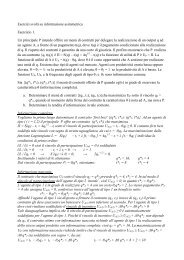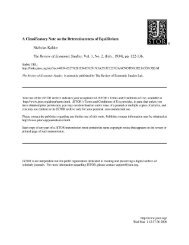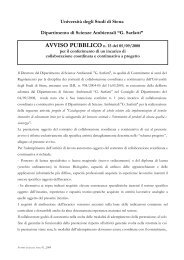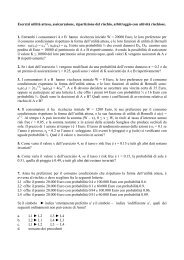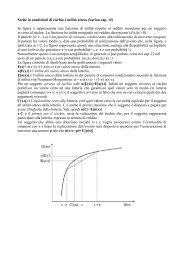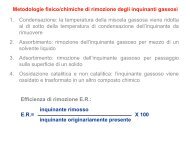Stabilisation Policy in a Closed Economy Author(s): A. W. Phillips ...
Stabilisation Policy in a Closed Economy Author(s): A. W. Phillips ...
Stabilisation Policy in a Closed Economy Author(s): A. W. Phillips ...
You also want an ePaper? Increase the reach of your titles
YUMPU automatically turns print PDFs into web optimized ePapers that Google loves.
1954] STABILISATION POLICY IN A CLOSED ECONOMY 307<br />
SECTION II<br />
A Model with Flexible Prices<br />
1. The Relationship between Prices and Production<br />
If changes <strong>in</strong> the quantity and productivity of the factors of<br />
production are ignored, the change <strong>in</strong> the average level of product<br />
prices which results from a given change <strong>in</strong> the aggregate level<br />
of production will be the sum of two components. First, if the<br />
prices of the services of the factors of production (which will be<br />
referred to for brevity as factor prices) are absolutely rigid,<br />
product prices, tend<strong>in</strong>g to move with marg<strong>in</strong>al costs, will vary<br />
directly with the level of production. This component of the<br />
change <strong>in</strong> product prices is probably not very large, and will be<br />
neglected <strong>in</strong> the follow<strong>in</strong>g analysis.<br />
Second, if factor prices have some degree of flexibility, there<br />
will be changes <strong>in</strong> product prices result<strong>in</strong>g from the changes which<br />
take place <strong>in</strong> factor prices. Even with flexible factor prices,<br />
there will be some level of production and employment which,<br />
given the barga<strong>in</strong><strong>in</strong>g powers of the different groups <strong>in</strong> the economy,<br />
will just result <strong>in</strong> the average level of factor prices rema<strong>in</strong><strong>in</strong>g<br />
constant, this level of production and employment be<strong>in</strong>g lower,<br />
the stronger and more aggressive the organisation of the factors<br />
of production. If aggregate real demand is high enough to make<br />
a higher level of production than this profitable, entrepreneurs<br />
will be more anxious to obta<strong>in</strong> (and to reta<strong>in</strong>) the services of<br />
labour and other factors of production and so less <strong>in</strong>cl<strong>in</strong>ed to<br />
resist demands for higher wages and other factor rewards. Factor<br />
prices will therefore rise. The level of demand be<strong>in</strong>g high, the ris<strong>in</strong>g<br />
costs will be passed on <strong>in</strong> the form of higher product prices.<br />
Factor and product prices will cont<strong>in</strong>ue to rise <strong>in</strong> this way so long<br />
as the high level of demand and production is ma<strong>in</strong>ta<strong>in</strong>ed, the<br />
rate at which they rise be<strong>in</strong>g greater, the higher the level of demand<br />
and production.<br />
Conversely, if aggregate real demand is so low that production<br />
at the level which would result <strong>in</strong> constant factor prices is un-<br />
profitable, entrepreneurs will be more anxious to force down<br />
factor prices, while at the lower level of employment factors will<br />
be less able to press for higher rewards and more <strong>in</strong>cl<strong>in</strong>ed to<br />
accept lower rewards. Factor prices will therefore gradually<br />
move downwards, and the level of demand be<strong>in</strong>g low, the fall<strong>in</strong>g<br />
costs will be reflected <strong>in</strong> fall<strong>in</strong>g product prices. Prices will con-<br />
t<strong>in</strong>ue to fall <strong>in</strong> this way so long as demand and production rema<strong>in</strong>



